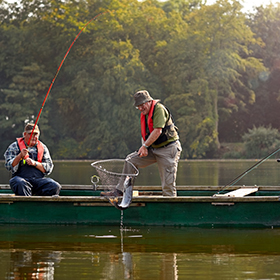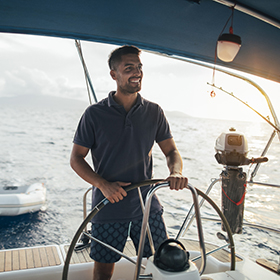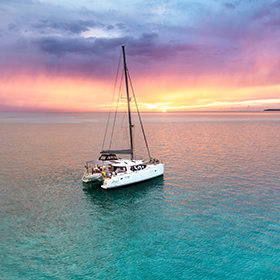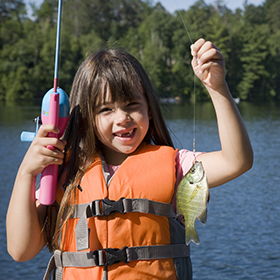Learn which personal flotation device types to use for specific boating situations, follow US Coast Guard life jacket requirements, stay safe on the water
Choosing the right PFDs to have on board for upcoming boating adventures isn’t complicated. If you’re new to boating, it’s important to understand that the U.S. Coast Guard divides personal flotation device types into five different categories. Let’s learn which types of PFDs are intended for specific activities and situations (offshore, nearshore or inland water bodies).
Type I: Off-shore Life Jacket
A Type I PFD is designed for offshore, rough seas, and remote waters, where rescue may be slow coming. While a Type I life jacket is bulkier in comparison to a Type II or Type III PFD, Type I PFDs are designed to turn unconscious wearers face-up position in the water. They are required have at least 22 pounds of buoyancy.
Type II: Near-shore Vest
Type II nearshore PFDs offer a minimum 15.5 pounds of buoyancy and are used for nearshore boating excursions. Type II PFDs are less bulky than Type I PFDs and are designed for protected inland or nearshore waters where the chance of immediate rescue is good. While Type II life jackets may turn some unconscious wearers face-up, they are not intended for rough or offshore waters.
Type III: Flotation Aid
This type of PFD is often used by wakeboarders, water skiers, surfers and as a personal flotation device for kayaking because of a more form-fitting design. Like Type II PFDs, Type III PFDs are also intended for calm waters where rescue would be quick and are designed to have a minimum of 15.5 pounds of buoyancy; however, they are not designed to turn an unconscious wearer face-up.
Type IV: Throwable Device
Type IV PFDs are designed to be held onto, rather than worn, by the user. They offer a minimum 16.5 pounds of buoyancy. A Type IV flotation device is a piece of boating safety equipment that is often referred to as a “throwable,” and it typically takes the shape of a ring or flat cushion that can be thrown to a person who unexpectedly lands in the water.
Type V: Special-Use Device
These are special-use personal flotation device types, which are often combined into flotation coats, whitewater rafting vests, deck suits, and sailboard harnesses. Most inflatable personal flotation devices or automatic inflatable personal flotation devices are also classified as Type V PFDs. Type V PFDs must be worn while underway to meet minimum U.S. Coast Guard requirements and have a minimum buoyancy of 15.5 to 22 lbs. for adults.
Check to be sure that all life jackets are approved by the U.S. Coast Guard, are good condition, fit properly, follow the size and weight requirements on the label (in other words, have the correct adult personal flotation device sizes and child personal flotation devices for everyone on board), and wear them.
Now that you know how to follow best boating safety practices by choosing the right PFD for different situations, sign up for a recreational boating safety class or safe boating course in your local area.









